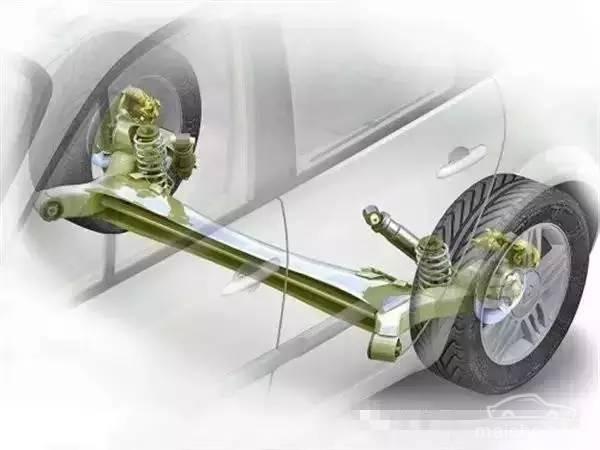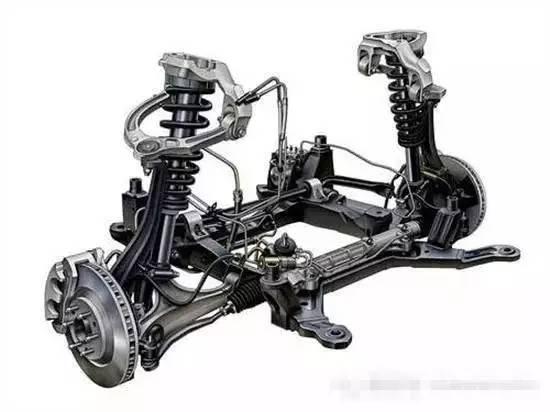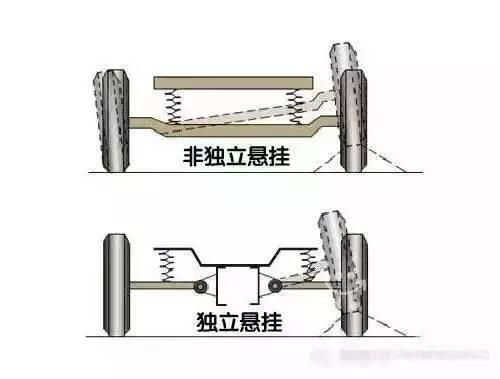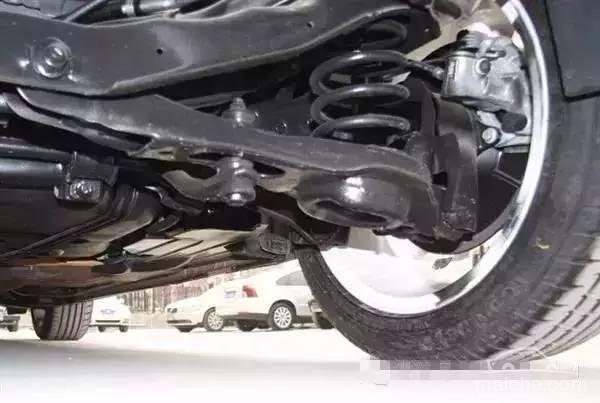We often hear the term “chassis tuning” from advertisements. It can be said that the handling and comfort of a car are directly related to the chassis design, and among them, the type and tuning of the suspension are the most important heavy. However, most consumers are actually not easy to understand the problem of adjustment, so the suspension type on the books is directly equated with sportiness and comfort, and many consumers will prefer to choose models with fully independent rear suspension , I think the structure is more advanced, the handling is better and more comfortable, and the non-independent suspension is only installed on “grocery shopping carts”. Is this really the case?

First of all, we need to understand the two concepts of independent and non-independent suspension.
Dependent Suspension:
The wheels on both sides are installed on an integral axle, and the axle is connected to the frame through the suspension. This kind of suspension has a simple structure and reliable force transmission, but the two wheels will affect each other when they are impacted and vibrated.

Independent Suspension:
Each wheel is separately installed on the vehicle body or the axle through a set of suspension. The axle is disconnected, and the middle section is fixed on the frame or the vehicle body. The wheels on both sides of this suspension do not affect each other when they are impacted.

Therefore, when one wheel of a car with non-independent suspension rises, it will inevitably cause the other wheel to fall. Therefore, theoretically, the roll of a non-independent suspension car is bound to be serious when turning, especially when the steering wheel is also non-independent suspension, it is easy to rollover accidents, so we see that most of the cars with front suspension Both use independent suspension (mostly MacPherson structure).
In fact, the suspension has two functions on the vehicle, one is to filter the shock, and the other is to keep the tires in maximum contact with the road. The former represents comfort, while the latter is handling. Therefore, the biggest weakness of non-independent suspension in theory is that it cannot have precise control on each wheel, such as filtering shocks. Potholes or bumps on one side will inevitably affect the other side, and the other is grip , especially when cornering, the side close to the center of the bend is equivalent to sinking, while the other side is lifted accordingly, so the tire contact surface will become smaller, the pressure will also decrease, and the grip will decrease. This is the theoretical weakness of the non-independent rear suspension.

But that is only in theory, because considering the handling and comfort of a car, it is absolutely incomplete to look at the suspension structure alone. As the article said, tuning is also an important measure of the chassis performance of a car.
The so-called adjustment actually includes the damping hardness of the spring and shock absorber, as well as the bushing (rubber or hydraulic), sub-frame, anti-roll bar, etc. The adjustment seems to be more important than the suspension structure. for complex. Take comfort as an example. When the vehicle passes through potholes or speed bumps, whether it feels comfortable is mainly determined by the spring, the hardness of the shock absorber, and the damping. If the springs are too hard and the damping is too large, the performance of the vehicle on these roads will be very stiff, and the vibration will be directly transmitted to the human body; if the springs are too soft and the damping is too small, it will feel that the support is not enough, and the suspension over a hurdle is like being trapped. The feeling of pressing down. Therefore, we have to understand that even if it is an independent suspension, if the springs and shock absorbers are not adjusted well, it will lead to a poor overall situation, so there will be such a situation in the vehicles currently on sale: a well-adjusted non-independent suspension , the comfort is higher than that of the poorly adjusted independent suspension, which shows that the adjustment plays a decisive role in the performance of the vehicle chassis.
What about handling? The master has always believed that driving on ordinary roads rarely pushes a car to the limit, so in fact, there is not much difference in handling between independent and non-independent suspensions. The main thing that has a greater impact on daily driving control is adjustment and Steering settings. A well-tuned suspension, body roll, weight and precision of steering, and spring support will make the vehicle more stable when changing lines and cornering, and give the driver more confidence. Winning or losing is determined by independent or non-independent, such as the non-independent rear suspension models of French cars, which have much better handling than many independent rear suspension models.

The cost of independent suspension and non-independent suspension is also different. From the perspective of structure alone, the cost of independent suspension is higher than that of non-independent suspension. This is also a factor affecting consumer choice. Everyone will choose products that seem to have higher value. But the master believes that we should look at the value of the entire chassis. The cost of two similar models with the same excellent chassis performance will not be too far apart, because the cost of tuning the non-independent suspension is actually higher than that of the independent suspension. So the cost “saved” in the structure is made up for the adjustment. As for why there is a distinction between independent and non-independent, it mainly depends on the positioning setting of the model. Many family cars that pay attention to space will choose non-independent suspension to obtain a relatively larger interior space, and the main sports models will naturally have to be bookmarked. It’s worth looking at, after all, people still subconsciously believe that independent suspension performs better in terms of sportiness.
The advantage of independent suspension is only the best in theory, and various factors must be considered. The existence shows that it is reasonable, and there are still many models of non-independent suspension in use, which also shows its value. Therefore, instead of entangled in choosing whether to be independent or non-independent, it is better to take a real test drive. After all, high specifications may not be good in reality.
Photo and text source: Cheyouhao-SUV Master. This article is an original article by SUV Master, authored by Liu Zitao.



